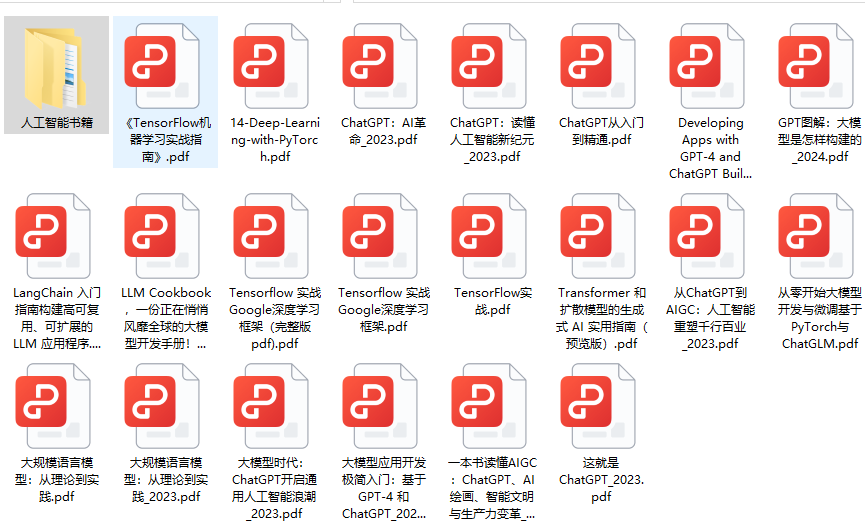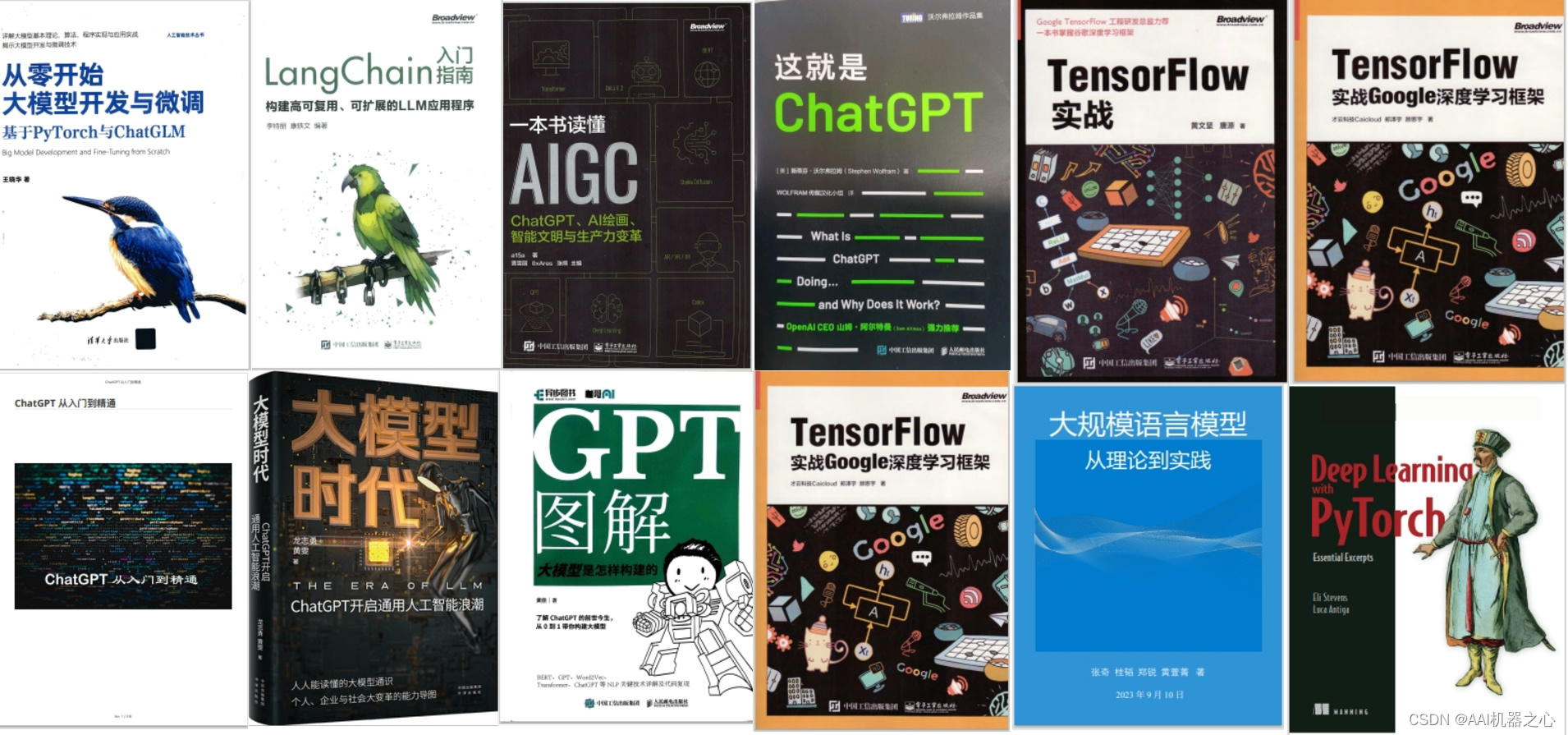随着多模态大语言模型(Multimodal Large Language Model, MLLM)的迅速发展,基于 MLLM 的多模态智能代理(agent)正在逐步应用于各种实际场景。这种技术的进步让利用多模态 agent 作为手机操作助手成为了现实,通过视觉感知和多模态交互,智能化地完成复杂任务。
本文将为您解读一项最新研究——《Mobile-Agent: Autonomous Multi-Modal Mobile Device Agent with Visual Perception》,该研究展示了如何借助多模态 agent 实现 AI 自动操作手机的技术突破。这一成果不仅扩展了移动设备的智能化边界,也为未来的自动化场景带来了全新可能性。
在本文中,我们介绍了一项具有里程碑意义的研究成果——Mobile-Agent,这是一种自主的多模态移动设备代理,能够通过视觉感知实现智能化的手机操作。

Mobile-Agent 的核心优势在于其视觉感知能力。它能够准确识别和定位应用前端界面中的视觉和文本元素,基于感知到的视觉上下文自主规划并分解复杂的操作任务。随后,它会通过逐步执行操作步骤导航移动应用。这种以视觉为中心的设计,使得Mobile-Agent 不再依赖应用的 XML 文件或移动系统的元数据,从而具备更强的适应性,能够在多样化的移动操作系统环境中工作,避免了系统定制的繁琐要求。
为了评估 Mobile-Agent 的性能,研究团队提出了MobileEval,一个专门用于评估移动设备操作能力的基准数据集。通过 MobileEval 的全面测试表明,Mobile-Agent 在操作准确性和任务完成率上都表现出了显著优势。即使在面临复杂指令(如跨应用操作)的情况下,它仍能够高效完成任务。
为了推动相关领域的发展,研究团队宣布将代码和模型开源,地址为https://github.com/X-PLUG/MobileAgent。这项成果不仅展示了多模态代理在移动设备领域的潜力,还为未来更复杂、更智能的移动操作系统代理奠定了坚实基础。
以下是一个利用 Mobile-Agent 在 YouTube 上搜索相关视频并发表评论的示例。用户的任务是让 Mobile-Agent 在 YouTube 上搜索某位明星的相关视频,找到合适的内容后,发布一条评论。在整个操作过程中,Mobile-Agent 准确无误地完成了任务,没有发生任何错误、不必要或无效的操作,展现了其强大的稳定性和执行能力。

接下来是一个操作多 App 的例子,用户的要求是先去查询今天的比赛结果,然后根据结果写一个新闻。这个任务的挑战性在于,前后要使用两个 App 完成两个子任务,并且需要将第一个子任务的结果作为第二个子任务的输入。Mobile-Agent 首先完成了查询比赛结果,随后退出浏览器并打开笔记,最后将比赛结果精准地写出,并以新闻的方式呈现。

为了便于将文本描述的操作转化为屏幕上的操作,Mobile-Agent 生成的操作必须在一个定义好的操作空间内。这个空间共有 8 个操作,分别是:
打开 App(App 名字)``点击文本(文本内容)``点击图标(图标描述)``打字(文本内容)``上翻、下翻``返回上一页``退出 App``停止
其中,点击文本和点击图标是两个需要操作定位的操作,因此 Mobile-Agent 在使用这两个操作时,必须输出括号内的参数,以实现定位。
部分代码:
import numpy as np``def calculate_iou(box1, box2):` `x1_min, y1_min, x1_max, y1_max = box1` `x2_min, y2_min, x2_max, y2_max = box2` `inter_x_min = max(x1_min, x2_min)` `inter_y_min = max(y1_min, y2_min)` `inter_x_max = min(x1_max, x2_max)` `inter_y_max = min(y1_max, y2_max)` `inter_area = max(0, inter_x_max - inter_x_min) * max(0, inter_y_max - inter_y_min)` `box1_area = (x1_max - x1_min) * (y1_max - y1_min)` `box2_area = (x2_max - x2_min) * (y2_max - y2_min)` `union_area = box1_area + box2_area - inter_area` `iou = inter_area / union_area` `return iou``def compute_iou(box1, box2):` `"""` `Compute the Intersection over Union (IoU) of two bounding boxes.` `Parameters:` `- box1: list or array [x1, y1, x2, y2]` `- box2: list or array [x1, y1, x2, y2]` `Returns:` `- iou: float, IoU value` `"""` `x1_inter = max(box1[0], box2[0])` `y1_inter = max(box1[1], box2[1])` `x2_inter = min(box1[2], box2[2])` `y2_inter = min(box1[3], box2[3])` `# print(x2_inter, x1_inter, y2_inter, y1_inter)` `inter_area = max(0, x2_inter - x1_inter + 1) * max(0, y2_inter - y1_inter + 1)` `box1_area = (box1[2] - box1[0] + 1) * (box1[3] - box1[1] + 1)` `box2_area = (box2[2] - box2[0] + 1) * (box2[3] - box2[1] + 1)` `iou = inter_area / float(box1_area + box2_area - inter_area)` `return iou``def merge_boxes(box1, box2):` `x1_min, y1_min, x1_max, y1_max = box1` `x2_min, y2_min, x2_max, y2_max = box2` `merged_box = [min(x1_min, x2_min), min(y1_min, y2_min), max(x1_max, x2_max), max(y1_max, y2_max)]` `return merged_box``def merge_boxes_and_texts(texts, boxes, iou_threshold=0):` `"""` `Merge bounding boxes and their corresponding texts based on IoU threshold.` `Parameters:` `- boxes: List of bounding boxes, with each box represented as [x1, y1, x2, y2].` `- texts: List of texts corresponding to each bounding box.` `- iou_threshold: Intersection-over-Union threshold for merging boxes.` `Returns:` `- merged_boxes: List of merged bounding boxes.` `- merged_texts: List of merged texts corresponding to the bounding boxes.` `"""` `if len(boxes) == 0:` `return [], []` `# boxes = np.array(boxes)` `merged_boxes = []` `merged_texts = []` `while len(boxes) > 0:` `box = boxes[0]` `text = texts[0]` `boxes = boxes[1:]` `texts = texts[1:]` `to_merge_boxes = [box]` `to_merge_texts = [text]` `keep_boxes = []` `keep_texts = []` `for i, other_box in enumerate(boxes):` `if compute_iou(box, other_box) > iou_threshold:` `to_merge_boxes.append(other_box)` `to_merge_texts.append(texts[i])` `else:` `keep_boxes.append(other_box)` `keep_texts.append(texts[i])` `# Merge the to_merge boxes into a single box` `if len(to_merge_boxes) > 1:` `x1 = min(b[0] for b in to_merge_boxes)` `y1 = min(b[1] for b in to_merge_boxes)` `x2 = max(b[2] for b in to_merge_boxes)` `y2 = max(b[3] for b in to_merge_boxes)` `merged_box = [x1, y1, x2, y2]` `merged_text = " ".join(to_merge_texts) # You can change the merging strategy here` `merged_boxes.append(merged_box)` `merged_texts.append(merged_text)` `else:` `merged_boxes.extend(to_merge_boxes)` `merged_texts.extend(to_merge_texts)` `# boxes = np.array(keep_boxes)` `boxes = keep_boxes` `texts = keep_texts` `return merged_texts, merged_boxes``def is_contained(bbox1, bbox2):` `x1_min, y1_min, x1_max, y1_max = bbox1` `x2_min, y2_min, x2_max, y2_max = bbox2` `if (x1_min >= x2_min and y1_min >= y2_min and x1_max <= x2_max and y1_max <= y2_max):` `return True` `elif (x2_min >= x1_min and y2_min >= y1_min and x2_max <= x1_max and y2_max <= y1_max):` `return True` `return False``def is_overlapping(bbox1, bbox2):` `x1_min, y1_min, x1_max, y1_max = bbox1` `x2_min, y2_min, x2_max, y2_max = bbox2` `inter_xmin = max(x1_min, x2_min)` `inter_ymin = max(y1_min, y2_min)` `inter_xmax = min(x1_max, x2_max)` `inter_ymax = min(y1_max, y2_max)` `if inter_xmin < inter_xmax and inter_ymin < inter_ymax:` `return True` `return False``def get_area(bbox):` `x_min, y_min, x_max, y_max = bbox` `return (x_max - x_min) * (y_max - y_min)``def merge_all_icon_boxes(bboxes):` `result_bboxes = []` `while bboxes:` `bbox = bboxes.pop(0)` `to_add = True` `for idx, existing_bbox in enumerate(result_bboxes):` `if is_contained(bbox, existing_bbox):` `if get_area(bbox) > get_area(existing_bbox):` `result_bboxes[idx] = existing_bbox` `to_add = False` `break` `elif is_overlapping(bbox, existing_bbox):` `if get_area(bbox) < get_area(existing_bbox):` `result_bboxes[idx] = bbox` `to_add = False` `break` `if to_add:` `result_bboxes.append(bbox)` `return result_bboxes``def merge_bbox_groups(A, B, iou_threshold=0.8):` `i = 0` `while i < len(A):` `box_a = A[i]` `has_merged = False` `for j in range(len(B)):` `box_b = B[j]` `iou = calculate_iou(box_a, box_b)` `if iou > iou_threshold:` `merged_box = merge_boxes(box_a, box_b)` `A[i] = merged_box` `B.pop(j)` `has_merged = True` `break` `if has_merged:` `i -= 1` `i += 1` `return A, B``def bbox_iou(boxA, boxB):` `# Calculate Intersection over Union (IoU) between two bounding boxes` `xA = max(boxA[0], boxB[0])` `yA = max(boxA[1], boxB[1])` `xB = min(boxA[2], boxB[2])` `yB = min(boxA[3], boxB[3])` `interArea = max(0, xB - xA + 1) * max(0, yB - yA + 1)` `boxAArea = (boxA[2] - boxA[0] + 1) * (boxA[3] - boxA[1] + 1)` `boxBArea = (boxB[2] - boxB[0] + 1) * (boxB[3] - boxB[1] + 1)` `iou = interArea / float(boxAArea + boxBArea - interArea)` `return iou``def merge_boxes_and_texts_new(texts, bounding_boxes, iou_threshold=0):` `if not bounding_boxes:` `return [], []` `bounding_boxes = np.array(bounding_boxes)` `merged_boxes = []` `merged_texts = []` `used = np.zeros(len(bounding_boxes), dtype=bool)` `for i, boxA in enumerate(bounding_boxes):` `if used[i]:` `continue` `x_min, y_min, x_max, y_max = boxA` `# text = texts[i]` `text = ''` `overlapping_indices = [i] # []` `for j, boxB in enumerate(bounding_boxes):` `# print(i,j, bbox_iou(boxA, boxB))` `if i != j and not used[j] and bbox_iou(boxA, boxB) > iou_threshold:` `overlapping_indices.append(j)` `# Sort overlapping boxes by vertical position (top to bottom)` `overlapping_indices.sort(key=lambda idx: (bounding_boxes[idx][1] + bounding_boxes[idx][3])/2) # TODO` `for idx in overlapping_indices:` `boxB = bounding_boxes[idx]` `x_min = min(x_min, boxB[0])` `y_min = min(y_min, boxB[1])` `x_max = max(x_max, boxB[2])` `y_max = max(y_max, boxB[3])` `# text += " " + texts[idx]` `text += texts[idx]` `used[idx] = True` `merged_boxes.append([x_min, y_min, x_max, y_max])` `merged_texts.append(text)` `used[i] = True` `return merged_texts, merged_boxes
import math``import cv2``import numpy as np``from PIL import Image, ImageDraw, ImageFont``import clip``import torch``def crop_image(img, position):` `def distance(x1,y1,x2,y2):` `return math.sqrt(pow(x1 - x2, 2) + pow(y1 - y2, 2))`` position = position.tolist()` `for i in range(4):` `for j in range(i+1, 4):` `if(position[i][0] > position[j][0]):` `tmp = position[j]` `position[j] = position[i]` `position[i] = tmp` `if position[0][1] > position[1][1]:` `tmp = position[0]` `position[0] = position[1]` `position[1] = tmp` `if position[2][1] > position[3][1]:` `tmp = position[2]` `position[2] = position[3]` `position[3] = tmp` `x1, y1 = position[0][0], position[0][1]` `x2, y2 = position[2][0], position[2][1]` `x3, y3 = position[3][0], position[3][1]` `x4, y4 = position[1][0], position[1][1]` `corners = np.zeros((4,2), np.float32)` `corners[0] = [x1, y1]` `corners[1] = [x2, y2]` `corners[2] = [x4, y4]` `corners[3] = [x3, y3]` `img_width = distance((x1+x4)/2, (y1+y4)/2, (x2+x3)/2, (y2+y3)/2)` `img_height = distance((x1+x2)/2, (y1+y2)/2, (x4+x3)/2, (y4+y3)/2)` `corners_trans = np.zeros((4,2), np.float32)` `corners_trans[0] = [0, 0]` `corners_trans[1] = [img_width - 1, 0]` `corners_trans[2] = [0, img_height - 1]` `corners_trans[3] = [img_width - 1, img_height - 1]` `transform = cv2.getPerspectiveTransform(corners, corners_trans)` `dst = cv2.warpPerspective(img, transform, (int(img_width), int(img_height)))` `return dst``def calculate_size(box):` `return (box[2]-box[0]) * (box[3]-box[1])``def calculate_iou(box1, box2):` `xA = max(box1[0], box2[0])` `yA = max(box1[1], box2[1])` `xB = min(box1[2], box2[2])` `yB = min(box1[3], box2[3])`` ` `interArea = max(0, xB - xA) * max(0, yB - yA)` `box1Area = (box1[2] - box1[0]) * (box1[3] - box1[1])` `box2Area = (box2[2] - box2[0]) * (box2[3] - box2[1])` `unionArea = box1Area + box2Area - interArea` `iou = interArea / unionArea`` ` `return iou``def crop(image, box, i, text_data=None):` `image = Image.open(image)` `if text_data:` `draw = ImageDraw.Draw(image)` `draw.rectangle(((text_data[0], text_data[1]), (text_data[2], text_data[3])), outline="red", width=5)` `# font_size = int((text_data[3] - text_data[1])*0.75)` `# font = ImageFont.truetype("arial.ttf", font_size)` `# draw.text((text_data[0]+5, text_data[1]+5), str(i), font=font, fill="red")` `cropped_image = image.crop(box)` `cropped_image.save(f"./temp/{i}.jpg")`` ``def in_box(box, target):` `if (box[0] > target[0]) and (box[1] > target[1]) and (box[2] < target[2]) and (box[3] < target[3]):` `return True` `else:` `return False`` ``def crop_for_clip(image, box, i, position):` `image = Image.open(image)` `w, h = image.size` `if position == "left":` `bound = [0, 0, w/2, h]` `elif position == "right":` `bound = [w/2, 0, w, h]` `elif position == "top":` `bound = [0, 0, w, h/2]` `elif position == "bottom":` `bound = [0, h/2, w, h]` `elif position == "top left":` `bound = [0, 0, w/2, h/2]` `elif position == "top right":` `bound = [w/2, 0, w, h/2]` `elif position == "bottom left":` `bound = [0, h/2, w/2, h]` `elif position == "bottom right":` `bound = [w/2, h/2, w, h]` `else:` `bound = [0, 0, w, h]`` ` `if in_box(box, bound):` `cropped_image = image.crop(box)` `cropped_image.save(f"./temp/{i}.jpg")` `return True` `else:` `return False`` `` ``def clip_for_icon(clip_model, clip_preprocess, images, prompt):` `image_features = []` `for image_file in images:` `image = clip_preprocess(Image.open(image_file)).unsqueeze(0).to(next(clip_model.parameters()).device)` `image_feature = clip_model.encode_image(image)` `image_features.append(image_feature)` `image_features = torch.cat(image_features)`` ` `text = clip.tokenize([prompt]).to(next(clip_model.parameters()).device)` `text_features = clip_model.encode_text(text)` `image_features /= image_features.norm(dim=-1, keepdim=True)` `text_features /= text_features.norm(dim=-1, keepdim=True)` `similarity = (100.0 * image_features @ text_features.T).softmax(dim=0).squeeze(0)` `_, max_pos = torch.max(similarity, dim=0)` `pos = max_pos.item()`` ` `return pos
如何学习AI大模型 ?
“最先掌握AI的人,将会比较晚掌握AI的人有竞争优势”。
这句话,放在计算机、互联网、移动互联网的开局时期,都是一样的道理。
我在一线互联网企业工作十余年里,指导过不少同行后辈。帮助很多人得到了学习和成长。
我意识到有很多经验和知识值得分享给大家,故此将并将重要的AI大模型资料包括AI大模型入门学习思维导图、精品AI大模型学习书籍手册、视频教程、实战学习等录播视频免费分享出来。【保证100%免费】🆓
CSDN粉丝独家福利
这份完整版的 AI 大模型学习资料已经上传CSDN,朋友们如果需要可以扫描下方二维码&点击下方CSDN官方认证链接免费领取 【保证100%免费】

读者福利: 👉👉CSDN大礼包:《最新AI大模型学习资源包》免费分享 👈👈
对于0基础小白入门:
如果你是零基础小白,想快速入门大模型是可以考虑的。
一方面是学习时间相对较短,学习内容更全面更集中。
二方面是可以根据这些资料规划好学习计划和方向。
👉1.大模型入门学习思维导图👈
要学习一门新的技术,作为新手一定要先学习成长路线图,方向不对,努力白费。
对于从来没有接触过AI大模型的同学,我们帮你准备了详细的学习成长路线图&学习规划。可以说是最科学最系统的学习路线,大家跟着这个大的方向学习准没问题。(全套教程文末领取哈)

👉2.AGI大模型配套视频👈
很多朋友都不喜欢晦涩的文字,我也为大家准备了视频教程,每个章节都是当前板块的精华浓缩。


👉3.大模型实际应用报告合集👈
这套包含640份报告的合集,涵盖了AI大模型的理论研究、技术实现、行业应用等多个方面。无论您是科研人员、工程师,还是对AI大模型感兴趣的爱好者,这套报告合集都将为您提供宝贵的信息和启示。(全套教程文末领取哈)

👉4.大模型落地应用案例PPT👈
光学理论是没用的,要学会跟着一起做,要动手实操,才能将自己的所学运用到实际当中去,这时候可以搞点实战案例来学习。(全套教程文末领取哈)

👉5.大模型经典学习电子书👈
随着人工智能技术的飞速发展,AI大模型已经成为了当今科技领域的一大热点。这些大型预训练模型,如GPT-3、BERT、XLNet等,以其强大的语言理解和生成能力,正在改变我们对人工智能的认识。 那以下这些PDF籍就是非常不错的学习资源。(全套教程文末领取哈)


👉6.大模型面试题&答案👈
截至目前大模型已经超过200个,在大模型纵横的时代,不仅大模型技术越来越卷,就连大模型相关的岗位和面试也开始越来越卷了。为了让大家更容易上车大模型算法赛道,我总结了大模型常考的面试题。(全套教程文末领取哈)

👉学会后的收获:👈
• 基于大模型全栈工程实现(前端、后端、产品经理、设计、数据分析等),通过这门课可获得不同能力;
• 能够利用大模型解决相关实际项目需求: 大数据时代,越来越多的企业和机构需要处理海量数据,利用大模型技术可以更好地处理这些数据,提高数据分析和决策的准确性。因此,掌握大模型应用开发技能,可以让程序员更好地应对实际项目需求;
• 基于大模型和企业数据AI应用开发,实现大模型理论、掌握GPU算力、硬件、LangChain开发框架和项目实战技能, 学会Fine-tuning垂直训练大模型(数据准备、数据蒸馏、大模型部署)一站式掌握;
• 能够完成时下热门大模型垂直领域模型训练能力,提高程序员的编码能力: 大模型应用开发需要掌握机器学习算法、深度学习
CSDN粉丝独家福利
这份完整版的 AI 大模型学习资料已经上传CSDN,朋友们如果需要可以扫描下方二维码&点击下方CSDN官方认证链接免费领取 【保证100%免费】

读者福利: 👉👉CSDN大礼包:《最新AI大模型学习资源包》免费分享 👈👈























 2608
2608

 被折叠的 条评论
为什么被折叠?
被折叠的 条评论
为什么被折叠?








